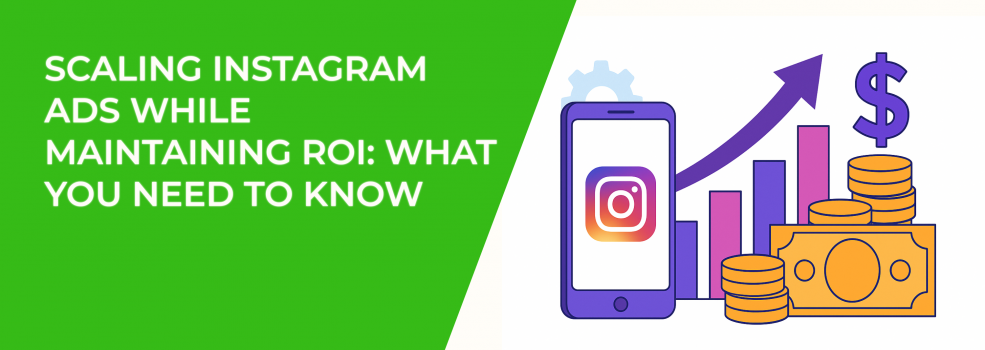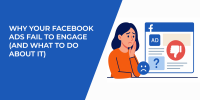Scaling your Instagram ad campaigns can feel like walking a tightrope. On one side, there’s the excitement of growth — reaching new audiences, getting more sales, boosting your brand. On the other, there’s the risk of seeing your ROI fall apart as your budget grows. So how do you scale up without draining your returns?
Here’s the truth: scaling is not just about increasing spend. It’s about doing it methodically, testing the right things, and knowing which levers to pull. Meta’s tools, particularly the Meta Advantage suite, make that process more efficient, but strategy still comes first.
Let’s dive into how to scale Instagram ads properly. You’ll get practical tips, a breakdown of different types of scaling, and a better understanding of how to maintain control over your ROI — even as you grow fast.
Understand the Two Paths: Horizontal vs. Vertical Scaling
Before touching budgets or tools, you need to know how you’re scaling.
Vertical scaling means increasing your budget within your best-performing campaigns. You’re banking on what's already working and putting more dollars behind it. It sounds simple, but it comes with a caveat: if you raise budgets too quickly, Meta’s delivery system can destabilize. That can lead to higher costs and worse performance.
To do it right, increase budgets gradually — think 15 to 20 percent every few days. Monitor your cost per result. If things stay steady or improve, keep going. If costs spike, scale back and let the campaign stabilize.
Horizontal scaling, on the other hand, is all about duplication and diversification. Instead of putting more money into one campaign, you create variations. This can mean:
-
Testing new creatives,
-
Trying different audience segments,
-
Launching ads in new placements or formats,
-
Running campaigns with different objectives (e.g., traffic vs. conversions).
Horizontal scaling is slower, but often more stable. It’s especially useful when your existing campaigns are hitting performance plateaus. And with Meta’s automation tools, managing multiple campaign variations has become much easier.
Before scaling anything, make sure your campaign objective aligns with your goals. If you’re unclear about which type to use, check out our breakdown of Meta ad campaign objectives and how to choose the right one for your business.
Meta Advantage+ Audience: Built for Horizontal Growth
As advertisers lose access to more granular targeting, Meta Advantage+ Audience becomes more valuable — particularly for horizontal scaling. Instead of manually building different audiences, you provide broad signals and let Meta do the segmentation.
This works well when launching new creative angles or testing fresh offers. You’re not telling Meta who to show ads to. You’re letting the algorithm figure it out based on behavior, context, and real-time performance.
If you’re duplicating a high-performing campaign for a new creative test, try using Advantage+ to reduce targeting conflicts and overlap. It will help prevent audience fatigue and expand reach more efficiently.
For Vertical Scaling, Use Cost Controls with a Light Touch
When increasing budgets inside a single campaign, you want to guide Meta, not restrict it. This is where cost controls come in.
If you know your average cost per acquisition (CPA), you can use:
-
Cost per result goal to maintain efficiency,
-
Bid cap if you want to control spending tightly,
-
ROAS goal to ensure you’re getting a specific return.
But go easy at first. If your campaign hasn’t exited the learning phase, avoid aggressive bid caps. Let the system stabilize before you set hard limits. Once the campaign matures, cost controls help you scale vertically without burning through cash.
Before applying cost controls, be sure your campaign has fully exited the learning phase. If you’re stuck in learning for too long, this guide to finishing the Facebook learning phase quickly can help stabilize performance.
Take Advantage of Advantage+ Shopping Campaigns
For e-commerce or product-driven campaigns, Advantage+ Shopping Campaigns are built for scale. These campaigns simplify creative testing and budget distribution while Meta handles audience optimization automatically.
You can input multiple creatives, formats, and placements. Meta then mixes and matches these to find the best combo for each viewer. This is especially powerful during horizontal scaling, where you’re introducing new variations. ASC removes the guesswork and helps you identify breakout creatives quickly.
Even for service-based businesses, this model can be adapted. Try uploading different testimonial videos, service descriptions, or landing pages. Let Meta see which angle resonates best with your audience.
Creative Is the Real Multiplier
When you scale — whether horizontally or vertically — your creative becomes the single biggest lever for growth.
Instagram users scroll fast. That means your ad needs to grab attention quickly, deliver value clearly, and look native to the platform.
To stay competitive:
-
Refresh creatives every 7 to 10 days,
-
Mix in video, carousels, and Reels,
-
Use real people and customer stories,
-
Highlight benefits in the first few seconds,
-
Avoid overly polished, high-production content.
Meta’s Creative Optimization tools will test variations in Advantage+ campaigns, but they can only work with what you give them. Think of your creative library as your growth engine.
If you’re scaling horizontally, every new creative gives you another angle to test. If you’re scaling vertically, fresh creative prevents audience fatigue as your impressions increase.
Scaling increases the risk of showing the same ad to the same people too often. To stay ahead of performance dips, here’s how to spot ad fatigue early and fix it fast.
Validate Your Growth with Conversion Lift
Are your ads really driving incremental value? Or would those customers have converted anyway?
Conversion Lift Tests can answer that.
These tests split your audience into two randomized groups: one sees your ads, and one doesn’t. You then compare results to see whether your campaign is truly lifting conversions.
When scaling, this insight is critical. You might think a campaign is performing well, but if it’s only attracting people who were already going to buy, your ROI will suffer in the long run.
Use lift tests when scaling a new product line, increasing spend significantly, or launching into new regions. It’s like a gut-check before you commit more budget.
Seeing spend go up without the results to match? Before scaling further, troubleshoot potential performance blockers using this resource on how to fix non-converting Facebook ads.
Putting It All Together
Scaling Instagram ads while maintaining ROI is not a one-size-fits-all formula. It’s a combination of smart budgeting, careful experimentation, and letting Meta’s machine learning do its thing — while you steer with intent.
Here’s a quick recap:
-
Use vertical scaling to boost budget on proven campaigns, but do it gradually.
-
Apply horizontal scaling to test new angles, audiences, and formats without disrupting core performance.
-
Lean on Meta Advantage tools to automate where it counts, especially with broad audiences and creative testing.
-
Keep your creative fresh and test consistently. It’s the most powerful driver of cost efficiency.
-
Validate performance with lift tests, not just pixel data.
So ask yourself: are you scaling vertically, horizontally, or just spending more?
With the right tools and a clear plan, you can grow your Instagram presence and keep your returns healthy. The key is knowing which growth path to take — and when to switch directions.

